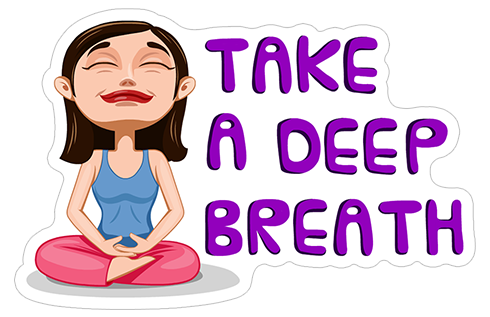It seems pretty obvious how important breathing is for human beings. The movement of air into the lungs and its absorption into the blood to feed the body’s cells, is a fundamental requisite for life. But it is also the vital ingredient of playing a brass instrument, it is the fuel that makes the lips vibrate and transmit a sound via the bell to the ears of the audience. It is not always understood how important breathing, and air in general, is. Players often talk about their embouchure, particularly if they are struggling with the high register, when they are actually not using the air properly to produce higher notes.
To start with though a brass player needs to fill up the fuel tanks and it is often surprisingly hard for them to do this. Breathing in is a natural process and all that is really necessary is to breath in normally but just take a bigger breath. It is often the case that players will raise their shoulders and work all sorts of contortions in their upper body to try and do this, when all it needs is to extend what they do every minute of the day without thinking about it.
Once the tank is full though what next? Well, the next thing to work out is how to use that air intake as efficiently as possible, and here is where some co-ordination with the embouchure is required. What is needed is a narrow channel of fast moving air vibrating the lips and moving into the mouthpiece, which is particularly important for higher register notes. The lips are so tight in the higher registers that they need high energy air to keep them vibrating, and the shape of the air is very vital. Another thing that is important is the timing of the breath in relation to the notes, meaning that if the intake of breath is played in rhythm with the music then accurate note production more likely. Why it works is difficult to establish, but by taking a breath in time in the final rest before an entry improves the chance of hitting the correct pitch cleanly by a huge amount.

So these are the fundamentals of good breathing and air control, and there are lots of breathing exercises to help with it. A popular one is to breathe in to a count of 4, hold for a count of 4 and then breathe out for a count of 4, repeating several times. It is not clear what this achieves practically but a couple of its benefits are to improve control of the breath and also keep the mind aware of good breathing technique. However, as stated above, one of the best ways of doing this is to practice breathing in normally and practice taking deeper and bigger inhalation.
So, air is the fuel of the brass player, and many problems can be traced back to insufficient breath control. If a player can effectively control the air through an instrument then they are 80% of the way to becoming a good brass player (there is no scientific basis for this claim, it is only illustrative!).
So breathing is more than just a way of keeping alive!



